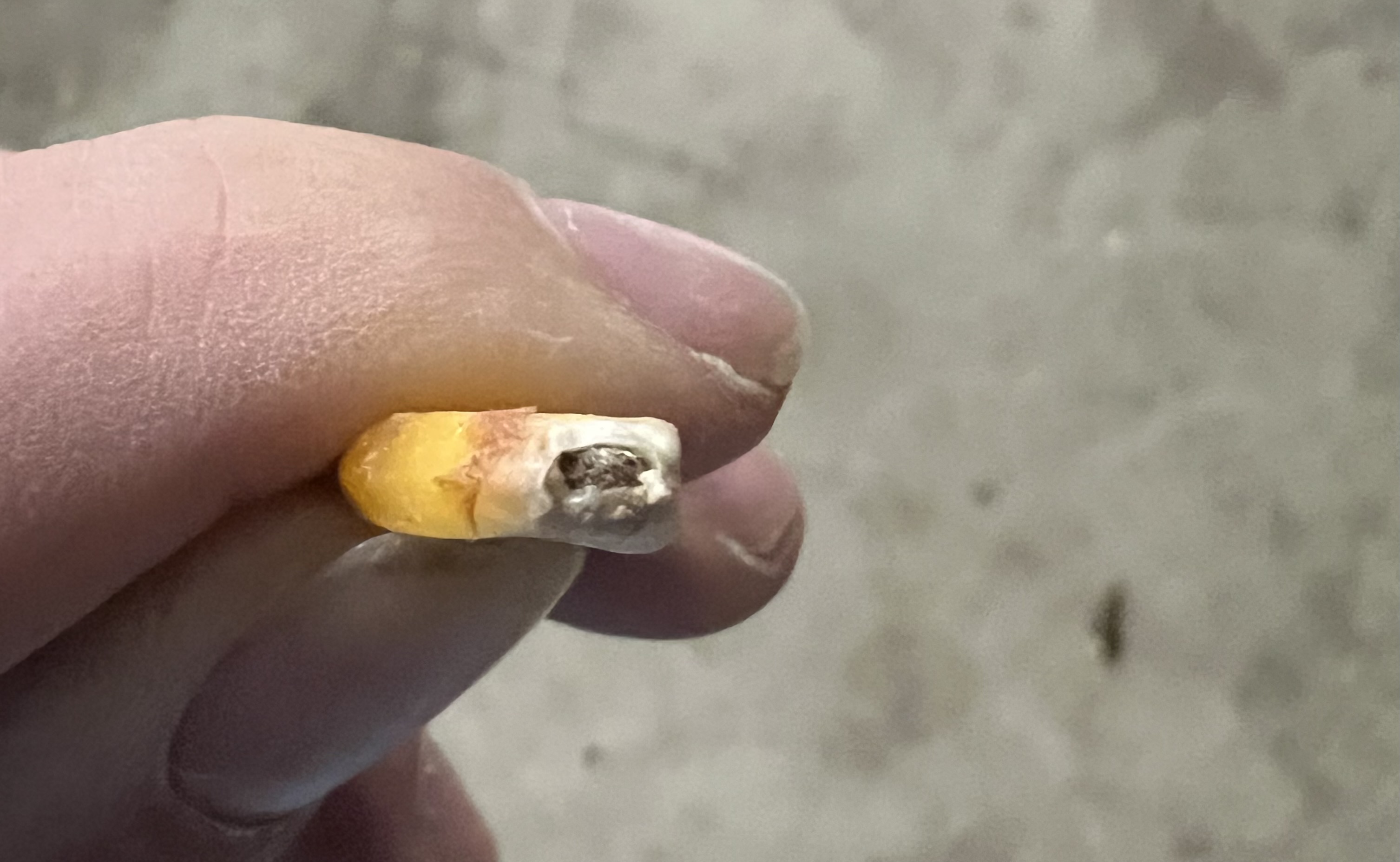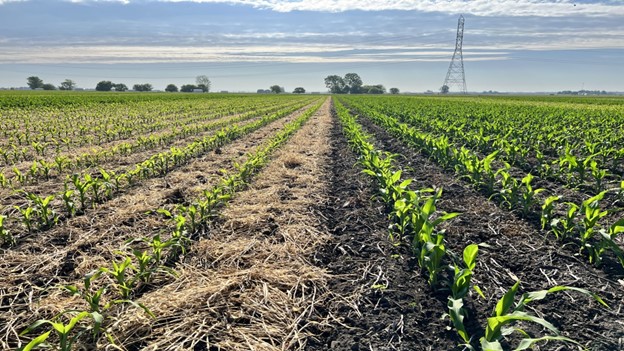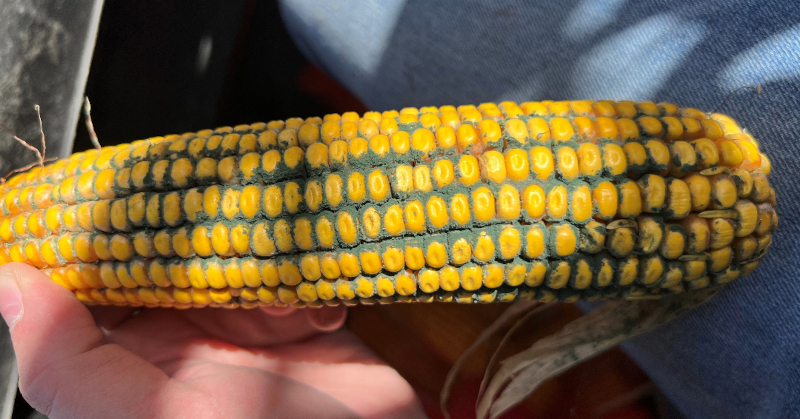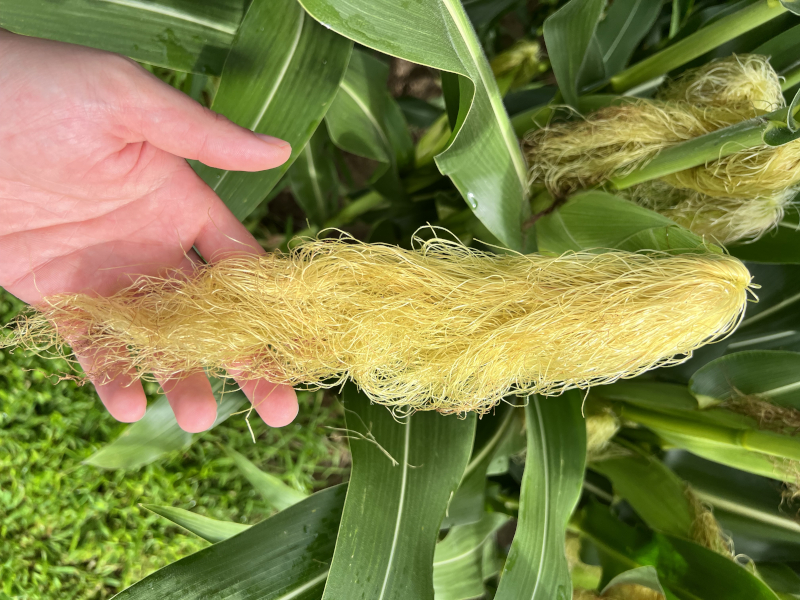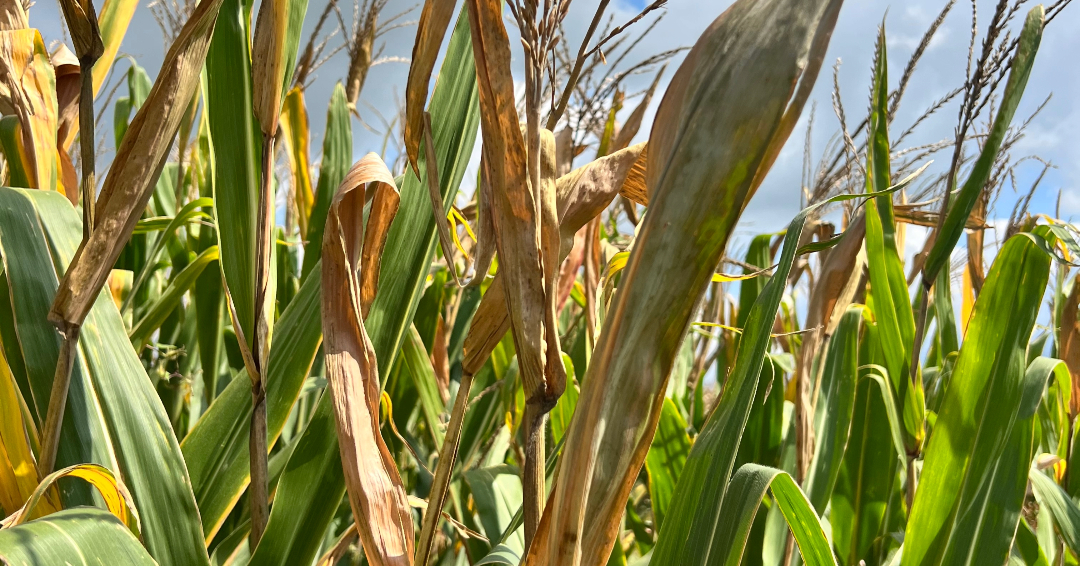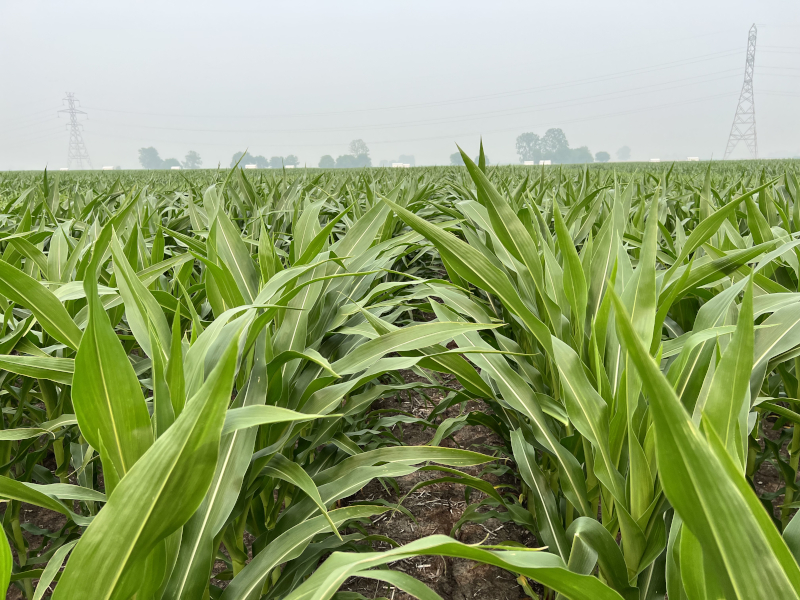As much of the corn across the state of Indiana has emerged and is beginning early vegetative growth, it is important to understand the characteristics of these early growth stages and what is happening in the plant at this specific time.
The VE growth stage is defined when the coleoptile breaks through the soil surface. The number of calendar days that this takes to occur is directly related to soil temperature. As farmers continue to push corn planting earlier and earlier, emergence can take much longer, which heightens the probability of corn seedling exposure to cooler temperatures and stress. As the coleoptile emerges, sunlight disrupts the mesocotyl (a white, tubular, root tissue between the seed and the base of the coleoptile) which fixes the depth of the corn growing point (~3/4 inch below the soil surface). In addition, through continued leaf expansion inside the coleoptile, the coleoptile tip is ruptured, the first true leaf begins to emerge, and photosynthesis begins.
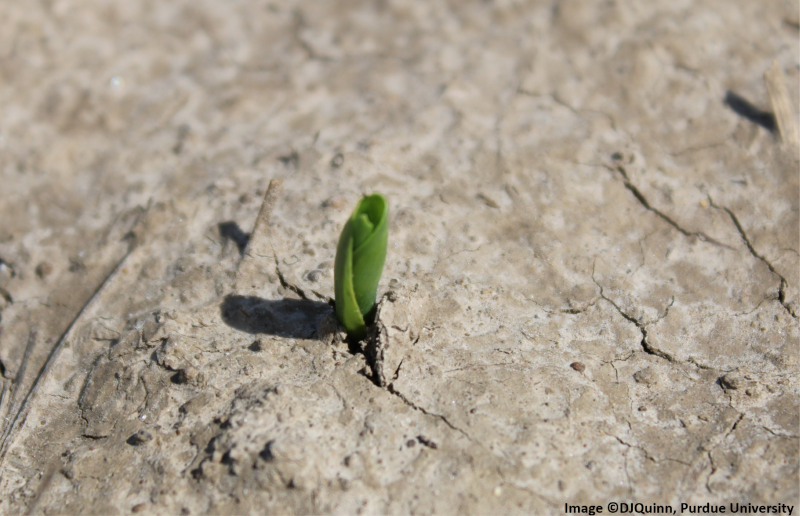
Image 1: Corn at the VE growth stage. Image shows the emergence of the first true leaf.
Note: If seed is planted too shallow, the growing point is fixed closer to the soil surface which can result in floppy corn (e.g. leaning over) syndrome. This can also be caused by poor seed furrow closure or excessively dry conditions following emergence.
The seminal root system is the primary root system of the corn plant at this point up until V3-V4 and is used to anchor the corn seedling and facilitate minimal nutrient and water uptake. In the background, a second root system is forming which is known as the nodal root system. If damage occurs to the seminal root system prior to nodal root establishment, plant stunting or death can occur.
The V1 growth stage is defined as plants with their first collared leaf. The first collared leaf is unique because it is oval shaped compared to the rest of the leaves which are pointed, this is also the starting point for growth staging plants using the leaf collar method. The first leaf of the corn plant is referred as the first true leaf because it is the first leaf of the plant to use photosynthesis to produce energy.
The V2 growth stage is defined as plants with the second collared leaf visible. At this growth stage formation of the nodal root system has begun and can be identified apart from the seminal root system.
Note: nodal roots that grow aboveground are known as brace roots. These roots can help the plant acquire nutrients and water from the upper soil layers and also help stabilize the plant during the growing season.
The V3 growth stage is defined as plant with three visible collared leaves. Up until this stage, corn seedlings are dependent primarily on the energy and nutrition reserves of the kernel for development. At V3, corn begins to shift its nutritional dependence to the nodal root system. This is an important transition stage in the corn plants life because successful transition will significantly influence the continued development of the corn plant. Success or failure at this growth stage can dictate whether stand establishment is successful or if stand establishment does not look so good. This transition period can also influence how well a corn plant can tolerate stress later on in the growing season which may influence yield potential.
Note: use of a starter fertilizer (e.g. 2×2) application at planting can help aid young corn plants as they transition from using kernel reserves to the nodal roots.
The good news is that as the corn plant advances from V3 and begins to shift its nutritional dependence to the nodal root system, the photosynthetic capacity or “factory” of the plant begins to increase. This allows the plant to ready itself for take-off and often move from a yellow-green, ugly corn plant, to a dark-green, attractive corn plant, which always makes those who produce and study this crop for a living, feel pretty good.
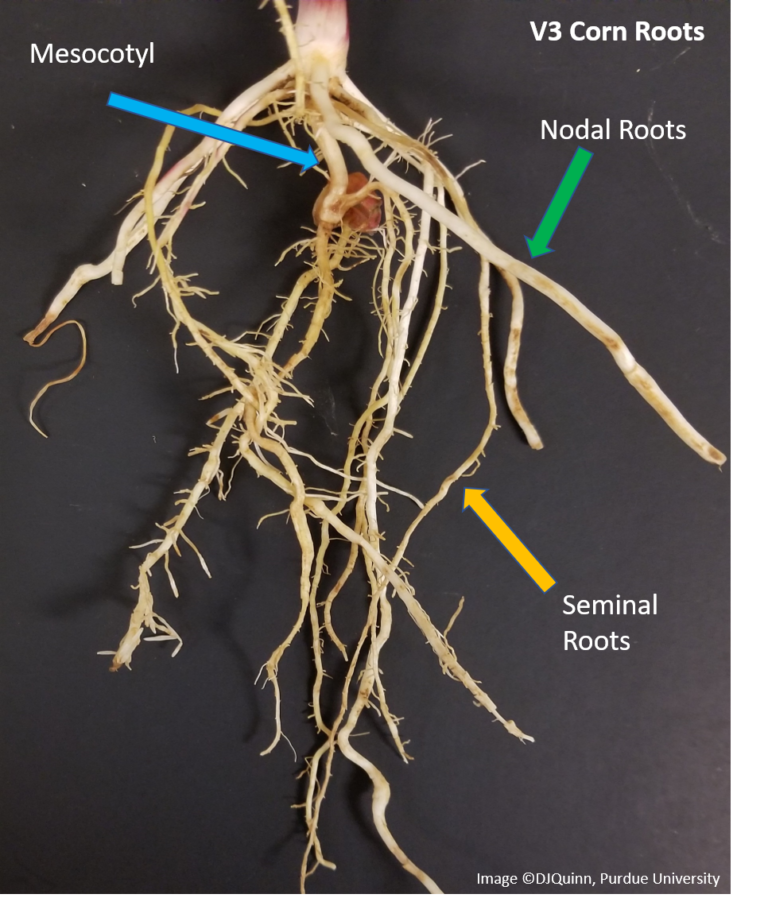
Image 2: Root system of a V3 corn plant highlight the mesocotyl, seminal and nodal roots.
References
Abendroth, L.J., R.W Elmore, M.J. Boyer, and S.K. Marlay. 2011. Corn Growth and Development. Iowa State Univ. Extension Publication #PMR-1009. https://store.extension.iastate.edu/Product/Corn-Growth-and-Development
Broeske, M. and J. Lauer. Visual Guide to Corn Development. University of Wisconsin-Madison Extension. https://ipcm.wisc.edu/wp-content/uploads/sites/54/2022/11/UW_CornDevGuide.pdf
Nielsen, R.L. 2000. Corn Growth and Development. What Goes on From Planting to Harvest? Corn Growers Guidebook, Purdue Extension. https://www.agry.purdue.edu/ext/pubs/agry-97-07_v1-1.pdf
Nielsen, R.L. 2010. Corn and the Ugly Duckling. Corny News Network, Purdue Extension. https://www.agry.purdue.edu/ext/corn/news/timeless/UglyDuckling.html
Nielsen, R.L. 2019. “Rootless” or “Floppy” Corn Syndrome. Corny News Network, Purdue Extension. https://www.agry.purdue.edu/ext/corn/news/timeless/floppycorn.html
